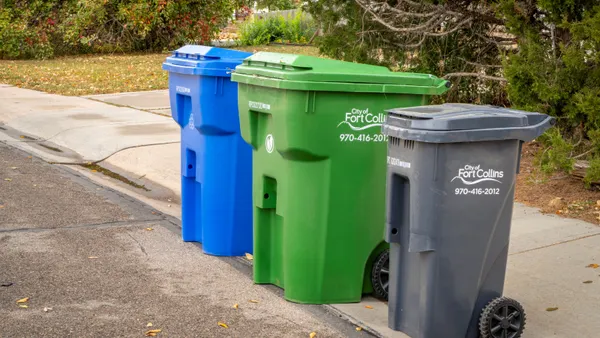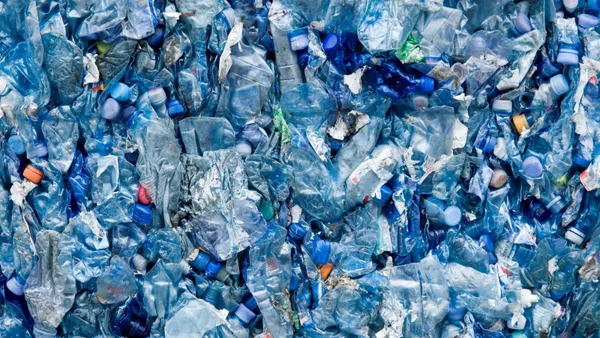Editor's Note: This story was originally published on Oct. 30, 2015.
Dive Brief:
- As Halloween season comes and goes, millions of pumpkins will find their way to the trash — adding more than 1.3 billion pounds waste to landfills across the nation. However, pumpkin composting and recycling can save the landfills from the soggy, rotten remains.
- In the Chicago area, Naperville's Environmental Collection Center is just one of a dozen collection centers accepting old pumpkins for composting. Additionally, initiatives such as SCARCE are expanding pumpkin collections — in 2014, the group collected 9.31 tons of old gourds.
- Of course eating the pumpkins (especially the seeds) is another great alternative. However, by dropping the pumpkins at a composting collection site, the waste can be reused as soil or transformed to biofuels that will serve a positive environmental and energy impact.
Dive Insight:
1.3 billion pounds of pumpkins is a haunting amount of waste to be sent to the landfill. "Keeping the pumpkins out of landfills and putting the nutrients back into the soil just makes sense," said SCARCE founder Kay McKeen to The Chicago Tribune. She noted that pumpkins are nearly 90% water and contain important nutrients that belong in a compost pile — not in the landfill.
This food waste is just a fraction of the 1.3 billion tons of food waste across the globe every year. This amount of waste also is a waste to resources to grow and process the food, like water and energy. According to the Food and Agriculture Orgainzation (FAO), the volume of water used to grow food that is wasted is equivalent to the annual flow of Europe's longest river.
As long as the once-cheerful Jack o' lanterns are being properly recycled or reused for an eco-friendly purpose, their waste will no longer spook, but instead benefit, the industry.









